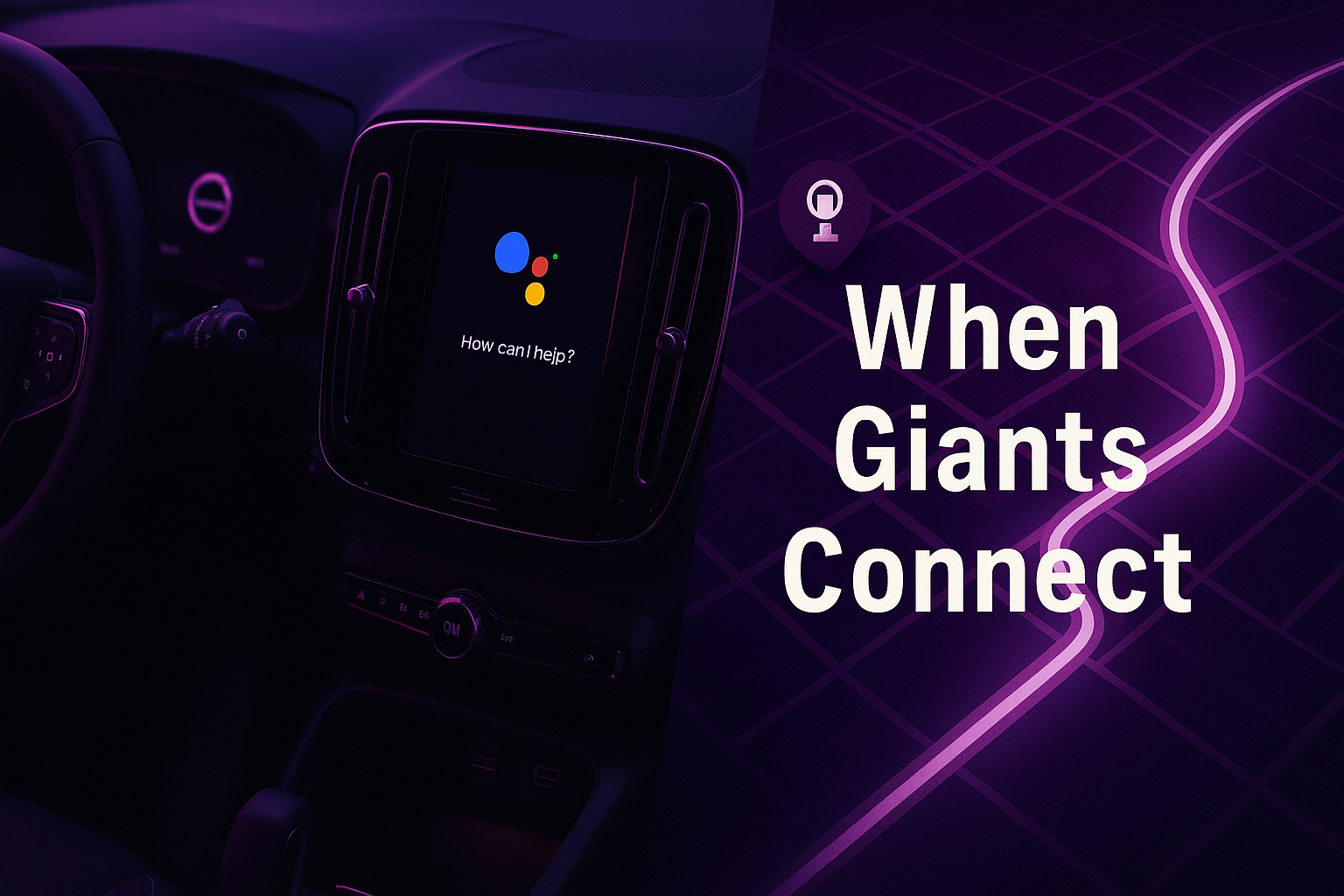They say that when a company name becomes a verb, that’s when they know a brand has it made. Many try do this intentionally, few have ever gotten it right. Hear the words: Hoover, Fedex, Uber, and most people immediately know that a person is vacuuming, sending a package or catching a ride.
In the world of tech, that verb is Google. Don’t know something? Google it. Need to navigate somewhere? Google maps. Some say that’s changing with ChatGPT, and it might, but it doesn’t change the fact that Google remains one of the leading tech giants – and the verb for when you’re looking for info.
So, what happens when a tech giant partners with another industry giant from another sector? A leader in innovation, with a reputation for building, arguably, the safest cars on the road. Will it make self-driving cars more of a reality, or even open up new opportunities for innovation? Given the depth of knowledge these two industry giants have, will it take vehicle automation into a realm not yet experienced?
Already Volvo vehicles with AAOS are designed to automatically connect with Google Play and Google Assist, and act as an independent Android device. This may not seem significant as most new vehicles come with an Android Auto feature. However, the focus of the new partnership is on development which gives Volvo earlier access to new technology from Google. As we know in the world of tech, new is where the competitive advantage is gained.
For Volvo, their goal is on finding ways to improve driver experiences through the use of more advanced technology. For Google, the advantage is being able to test the technology in real world circumstances, before rolling it out to other partners. The question is: can these two industry giants do more together than they could independently?
Looking forward, Volvo is investing heavily in electric vehicles and this opens up opportunities for electronic information gathering on the vehicle systems that can improve the driver experience.
Safety features have always been important for Volvo and testing different forms of intelligent driving monitoring systems can help identify which would be most effective. Even keeping a history of driving habits or routes provides data that can issue alerts or suggestions. For example, driving in an area where there’s a school or construction taking place, the intelligent driving system could issue a reminder for extra caution or could activate automatic braking.
One of the common objections in switching to an EV is the range and charge time. The charging technology is improving all the time, but knowing where high speed chargers are located on a route is valuable information for drivers, as well as estimating how long it’ll take to recharge. With Gemini AI assist integrated into systems, the vehicle may be able to auto-suggest routes based on vehicle energy use, planned trip and recharging needs. This can take the anxiety out of having to plan a trip around range and charging facilities.
Testing, experimentation, with two leaders in innovation working together, it’ll be exciting to see what developments come from the partnership.




